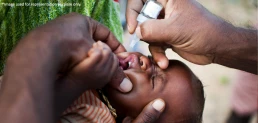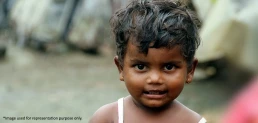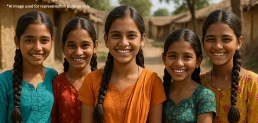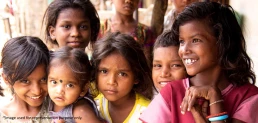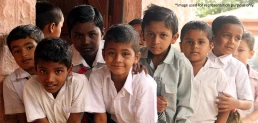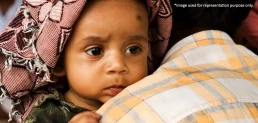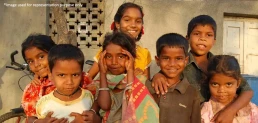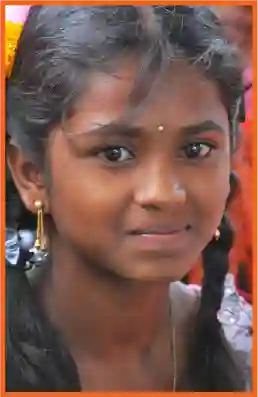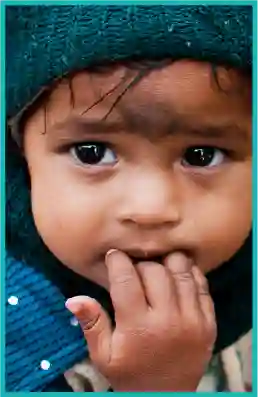Every child deserves a beautiful, playful childhood. But every year, the lives and well-being (physical, mental, and emotional) of millions of children around the world are threatened by maltreatment such as abuse, neglect, violence, and exploitation. India has a comprehensive set of laws to protect children, and child protection is increasingly accepted as one of the core components of society. However, the implementation of these laws still remains a challenge due to insufficient resources and poor-quality prevention and rehabilitation services.
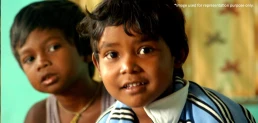

Violence takes place in all settings: school, home, childcare institutions, work, and community, too.
In this blog, we will understand what child protection is, why it is important, the role of child protection in ensuring children’s safety and well-being, and child protection laws and policies.
Also Read: School Safety and Child Protection
What is Child Protection, and Why is it Important?
Children suffer from multiple forms of violence, exploitation, and abuse. It happens in every country, and the places children should be the most protected are their homes, schools, and communities. Child protection, as the name suggests, refers to the measures and initiatives that safeguard children from violence, abuse, neglect, exploitation, and harmful practices.
Abuse and neglect can severely affect children’s lives and lead to long-term issues, including mental health issues. As adults and mentors, we have a legal and, most importantly, a moral responsibility to protect children from harm. Neglecting to safeguard children can have a massive impact and incur significant costs in the future.
Also Read: Early Childhood Education in India
The Role of Child Protection in Ensuring Children’s Safety and Well-being
Child protection plays a vital role in:
- Preventing abuse and exploitation: Through awareness, laws, and intervention programs, child protection systems prevent harm before it occurs.
- Providing rehabilitation: Children rescued from exploitative situations need psychosocial support, education, and healthcare to rebuild their lives.
- Promoting long-term development: A protected child is more likely to attend school, maintain better health, and become a productive member of society.
- Strengthening families and communities: Child protection efforts often include educating parents, empowering communities, and improving social infrastructure.
When protection is effective, children thrive. When it fails, they suffer, and so does our collective future.
Also Read: Child Rights in India
Child Protection Laws and Policies in India
India has made significant laws and many advancements in child protection, aligning many of its frameworks with international standards such as the UN Convention on the Rights of the Child (UNCRC), which India ratified in 1992. Below are some of the key laws and schemes that define the legal landscape of child protection in our country:
- Juvenile Justice (Care and Protection of Children) Act, 2015
This is the primary legislation for children in need of care and protection. It establishes mechanisms for rehabilitation, foster care, adoption, and the establishment of Child Welfare Committees. - Protection of Children from Sexual Offences (POCSO) Act, 2012
A landmark law that provides a robust legal framework to combat sexual abuse and exploitation of minors. It mandates child-friendly procedures during investigation and trial. - Child Labor (Prohibition and Regulation) Amendment Act, 2016
This law bans employment of children below 14 years in any occupation and of adolescents (14–18 years) in hazardous processes. - Prohibition of Child Marriage Act, 2006
This law seeks to eradicate the social evil of child marriage by setting a minimum legal age and establishing penalties for those who facilitate or conduct such marriages. - Right of Children to Free and Compulsory Education (RTE) Act, 2009
While not a protection law per se, access to free education up to the age of 14 is critical in safeguarding children from exploitation, child labor, and early marriage. - Integrated Child Protection Scheme (ICPS)
A government initiative to build a protective environment for children through infrastructure, trained personnel, and institutional support.
Also Read: Child Abuse Prevention: Ensuring a Safe School Environment
Principles of Child Protection
Child protection is not just about enforcing laws; it is grounded in universal principles that guide policymakers, caregivers, and communities alike. These principles ensure that children are treated with dignity, fairness, and empathy, regardless of their background.
The Right to Protection from Harm, Abuse, and Exploitation
At the heart of child protection lies the right to be protected from all forms of physical or mental violence, injury, abuse, neglect, maltreatment, and exploitation, as enshrined in Article 19 of the UNCRC. This includes:
- Protection from physical and sexual abuse: Every child has the right to a life free from violence and exploitation in the home, school, or community.
- Protection from economic exploitation: Children should not be forced into work that deprives them of their childhood or is harmful to their health or development.
- Protection during emergencies: During conflicts, natural disasters, or pandemics, children face heightened risks and must be prioritized in relief and recovery efforts.
- Protection of identity and family life: Children should be raised in a family environment, and if not, in a setting that replicates it as closely as possible.
These rights are not optional; they are fundamental. Ensuring them requires a concerted effort from governments, NGOs, communities, and individuals like you.
Also Read: Child Rights in India
How CRY America Can Help with Child Protection
CRY (Child Rights and You) America is a nonprofit organization that believes every child deserves a safe, healthy, and happy childhood. Operating in partnership with grassroots NGOs, CRY focuses on strengthening child protection systems across India, and you can help fuel this mission.
Here’s how CRY America contributes:
- Preventing Child Labor and Trafficking: CRY works with local communities to identify children at risk and intervene early. Through education, awareness drives, and family support, CRY helps keep children in school and out of exploitative labor.
- Rescue and Rehabilitation: In cases of child abuse, trafficking, or exploitation, CRY partners with rescue agencies to remove children from harmful environments. These children are then placed in rehabilitation programs that offer healthcare, education, and emotional support.
- Empowering Communities: Change happens when communities are aware and empowered. CRY invests in training community volunteers, parents, and local leaders to act as protectors for children in their areas.
- Influencing Policy and Accountability: CRY engages with local and national governments to strengthen laws, monitor implementation, and advocate for better budget allocation toward child welfare.
- Emergency Response: During COVID-19, CRY rapidly adapted its work to ensure children and their families had access to food, healthcare, education continuity, and safety measures.
Also Read: Vaccination of Infants
Why Your Support Matters
While the work CRY America does is transformative, it needs the sustained support of compassionate individuals like you. Your donation can:
- Provide education support to vulnerable children
- Fund healthcare and nutrition programs
- Help rescue children from child labor or marriage
- Train child protection workers
You don’t need to be an expert to make a difference. A small monthly donation can help safeguard a child’s future. When we protect children, we protect hope, resilience, and the promise of a better tomorrow.
Also Read: Child Labor Laws and Regulations India
Final Thoughts
Child protection is not a luxury; it is a necessity. It forms the foundation of a just, equal, and humane society. By understanding the laws, upholding the principles, and supporting the practices that safeguard children, we move closer to a world where every child can grow up free from fear and full of potential.
But laws alone can’t protect a child. It takes awareness, vigilance, compassion, and action.
Join CRY America in this life-changing journey. Educate others. Advocate for policies. Report abuse. And most importantly, donate generously. Your contribution is not just charity; it is an investment in our shared humanity.
Be the reason a child feels safe. Be the voice that stands up for justice. Be the hand that protects.
Support child protection. Support CRY America.
Also Read: Causes of Gender Inequality
FAQs
Why are child protection laws essential?
Child protection laws are crucial because they establish legal safeguards to prevent abuse, exploitation, and neglect of children. They uphold children’s rights to safety, education, and development, holding individuals and institutions accountable for harm. These laws create a legal framework for intervention, justice, and rehabilitation, ensuring children receive the care and dignity they deserve in a just and protective environment.
How can child protection be improved at the community level?
Improving child protection at the community level requires awareness campaigns, community education, and strong local reporting mechanisms. Training parents, teachers, and local leaders to recognize abuse and respond appropriately is vital. Forming child protection committees, involving youth voices, and building trust between citizens and authorities can lead to faster intervention and long-term cultural change. Empowered communities become the first line of defense for children’s rights.
What is the role of a child protection NGO?
Child protection NGOs play a pivotal role by filling gaps in government services. They rescue at-risk children, offer rehabilitation, advocate for policy reforms, and build awareness at the grassroots level. NGOs like CRY America also train communities, support school reintegration, and help enforce child rights laws. Their holistic, rights-based approach addresses both immediate needs and root causes of child vulnerability, ensuring sustainable protection and development.
How can organizations create and implement effective child protection policies?
Organizations must begin by assessing risks and identifying vulnerable points in their operations. Effective child protection policies include clear reporting procedures, staff training, background checks, and child-safe codes of conduct. Implementation requires regular audits, accountability structures, and child-friendly communication channels. Partnering with child rights experts and aligning policies with national and international standards ensures protection is proactive, inclusive, and consistently enforced.
Recommended for you











